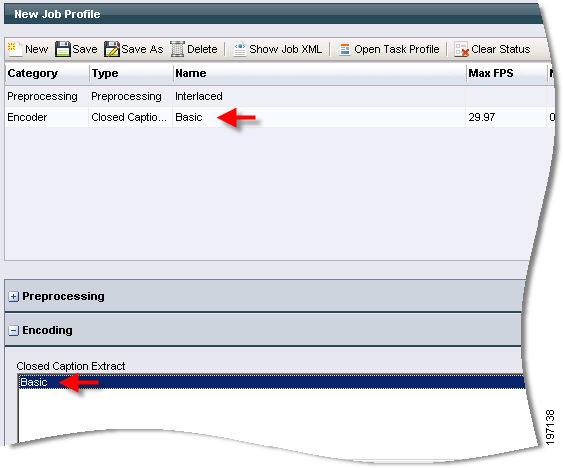

Table Of Contents
Introduction to the Caption Extract Encoder
Understanding Caption Extract Settings
Common (Caption Extract Profile)
Settings (Caption Extract Profile)
Creating a Caption Extract Profile
Adding a Caption Extract Profile to a Job Profile
Caption Extract Profiles
The purpose of the Caption Extract Encoder is to write the extracted closed caption data from the video source into various output formats.
This section includes the following topics:
•
Introduction to the Caption Extract Encoder
•
Understanding Caption Extract Settings
•
Creating a Caption Extract Profile
•
Adding a Caption Extract Profile to a Job Profile
Introduction to the Caption Extract Encoder
The Cisco MXE 3500 Preprocessor extracts all closed caption data from the video source. The purpose of the Caption Extract Encoder is to write the extracted data into various output formats. To accomplish this, create a Caption Extract Profile and add it to the Job Profile. See also: Creating a Caption Extract Profile and Adding a Caption Extract Profile to a Job Profile.
Find a description of the settings available in the Caption Extract encoder profile in the "Understanding Caption Extract Settings" section.
Understanding Caption Extract Settings
Each Caption Extract Profile includes the following sections:
•
Common (Caption Extract Profile)
•
Settings (Caption Extract Profile)
Common (Caption Extract Profile)
Figure 10-1 shows the Common section. Table 10-1 describes the settings.
Figure 10-1 Caption Extract Profile: Common Section
Settings (Caption Extract Profile)
Figure 10-2 shows the Settings section. Table 10-2 describes the settings.
Figure 10-2 Caption Extract Profile: Settings Section
Table 10-2 Caption Extract Profile: Settings and Descriptions
Output Type
Select the output format: SCC, XML, or W3C.
Creating a Caption Extract Profile
Use this procedure to create a Caption Extract Profile.
Procedure
Step 1
From the Toolbox, click Profile Management > New Profile.
Step 2
From the New Profile pop-up Profile Class drop-down, select Caption Extract, as shown in Figure 10-3.
Figure 10-3 Creating New Caption Extract Profile
Step 3
Click the New Profile button. The New Caption Extract Profile page displays.
Step 4
Enter the appropriate settings, and click Save.
Adding a Caption Extract Profile to a Job Profile
Procedure
Step 1
From the Toolbox, click Profile Management > New Profile or Open Profile.
Step 2
From the Profile Class drop-down, select Job, and click the New Profile or Open Profile button.
Step 3
Expand the Encoding section.
Step 4
Highlight one or more individual Caption Extract Profiles. As they are selected, the Encoder Profiles are added to the Job Profile in the upper pane, as shown in Figure 10-4.
Step 5
Click Save.
Figure 10-4 Adding a Caption Extract Profile to a Job Profile

 Feedback
Feedback



